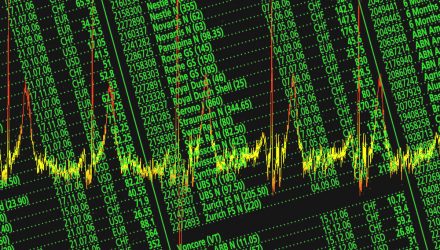Markets look to be edging close to a negative close for the week as volatility driven by Omicron and new Federal Reserve commitments cause worry and doubt, reports CNBC.
The S&P 500 was down for a second day in a row, dropping 0.6%, the Dow Jones Industrial Average experienced a 140 point drop (1.1%), and the Nasdaq Composite hit a 1.5% decline at its lowest point in trading today. All of the major indexes are tracking towards a week of overall losses, with the S&P 500 and the Dow Jones both down over 1% and the tech-heavy Nasdaq having fallen 2.4% overall.
Friday trading also happened to be the “quadruple witching” day where stock options, index options, stock futures, and index futures all had their quarterly expirations; the day generally brings greater volatility to markets.
The expirations have added into the compounding fears of Omicron’s economic and health threat, and the Federal Reserve committing to much more aggressive tapering and appearing to be leaning towards multiple rate increases next year has made for a volatile day of trading.
“As the Federal Reserve turns more hawkish and expectations for higher interest rates rise, investors are lowering exposure to growth stocks,” said Jim Paulsen, chief investment strategist at The Leuthold Group. “Typically, growth stocks exhibit a higher duration compared to value stocks because a higher proportion of their cash flows will be received in the more distant future.”
Markets are anticipated to remain volatile at least through the end of the year, with much still unknown about Omicron heading into the major holiday week.
Seeking Income Through Diversified Exposure
With much still unknown for Omicron and its potential effects on the economy, the American Century Multisector Income ETF (MUSI) can be an excellent option for investors who are seeking income potential that is risk-adjusted in the midst of any market environment.
MUSI is an actively managed ETF that seeks diversified exposures across investment-grade corporate, high-yield, securitized, and emerging market bonds.
The portfolio managers rotate sector allocation depending on the global macroeconomic outlook combined with the relative valuation between sectors. This sector allocation considers inflation, economic activity, and monetary policy utilizing fundamental research and quantitative modeling.
MUSI invests in both investment-grade corporate bonds and high-yield “junk bonds.” The fund can also invest in preferred stock, convertible securities, bank loans, and other equivalents within equities. By investing in securitized credit instruments, the fund is capable of liquidity in times of market movement. Investing in high-yield bonds typically means shorter durations that are less affected by rising interest rates, as well as the ability to capture the call price of a company refinancing to lock in lower rates before rates rise further. This penalty is rolled into the returns for high-yield bonds and equates to even greater returns for investors.
The investment allocations for MUSI as of the end of November were 50.35% into credit, 26.09% into securitized, 16.2% into emerging markets, and 6.63% into equities.
MUSI carries an expense ratio of 0.35% and has an option adjusted duration of 3.64 years as of November 30, 2021.
For more news, information, and strategy, visit the Core Strategies Channel.


